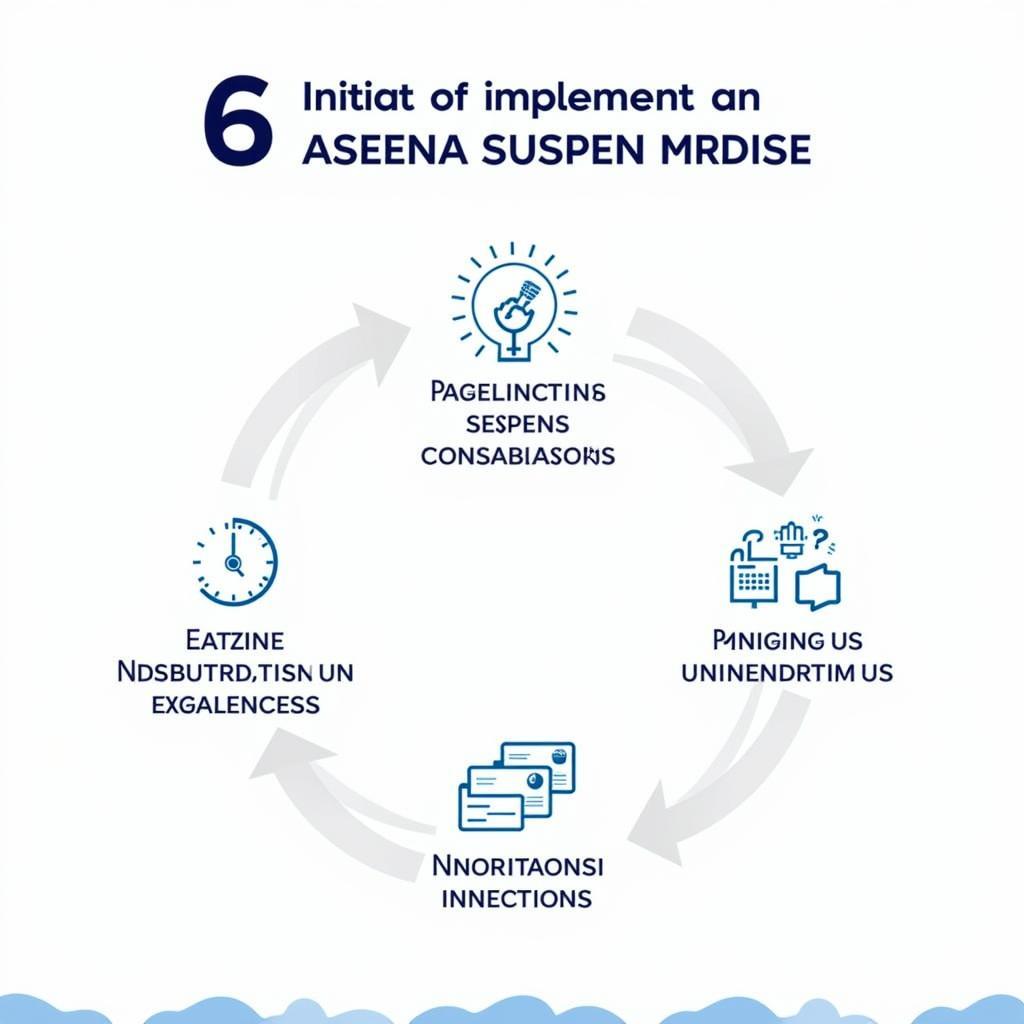Navigating the intricacies of the ASEAN Suspension can feel overwhelming, especially with its complex regulations and requirements. This comprehensive study guide aims to equip you with all the knowledge needed to understand the ASEAN Suspension system.
Demystifying the ASEAN Suspension
The ASEAN Suspension refers to a regulatory procedure used by the Association of Southeast Asian Nations (ASEAN) to temporarily suspend the implementation of tariff concessions on certain products. This mechanism allows member states to protect domestic industries from sudden surges in imports that threaten to cause or cause serious injury to domestic producers.
 ASEAN Suspension Mechanism Illustration
ASEAN Suspension Mechanism Illustration
Key Features of the ASEAN Suspension
Understanding the specific features of the ASEAN Suspension is crucial for businesses engaged in international trade:
- Safeguard Measure: It primarily serves as a safeguard measure to address unforeseen import situations that can negatively impact domestic industries.
- Temporary Nature: Unlike permanent tariffs, the ASEAN Suspension is temporary, typically lasting for a specific period, after which the original tariff concessions are reinstated.
- Investigative Process: A thorough investigation precedes the imposition of a suspension. This process involves gathering evidence and assessing the impact of increased imports on the domestic industry.
- Consultations and Transparency: ASEAN members are required to engage in consultations with other member states before applying a suspension. This ensures transparency and provides opportunities for dialogue and resolution.
How ASEAN Suspension Impacts Businesses
The implementation of an ASEAN Suspension can significantly impact businesses involved in importing or exporting goods within the region:
- Increased Import Costs: Businesses importing goods subject to suspension may face increased costs due to the higher tariffs.
- Supply Chain Disruptions: The sudden change in tariff rates can cause disruptions to existing supply chains, leading to delays and uncertainties.
- Market Access Restrictions: Suspensions can act as barriers to market access for businesses exporting goods to ASEAN countries.
Navigating ASEAN Suspension Challenges
Here are some strategies to consider:
- Stay Informed: Businesses should closely monitor trade developments and policy changes related to ASEAN Suspensions.
- Diversify Sourcing: Exploring alternative sourcing options can mitigate the impact of suspensions on specific products.
- Engage with Authorities: Businesses can engage with relevant government agencies to provide input and seek clarification on suspension measures.
ASEAN Suspension: A Balancing Act
The ASEAN Suspension mechanism reflects the delicate balance between promoting free trade and protecting domestic industries. By understanding its intricacies, businesses can better navigate its complexities and adapt their strategies to ensure continued success in the dynamic ASEAN market.
